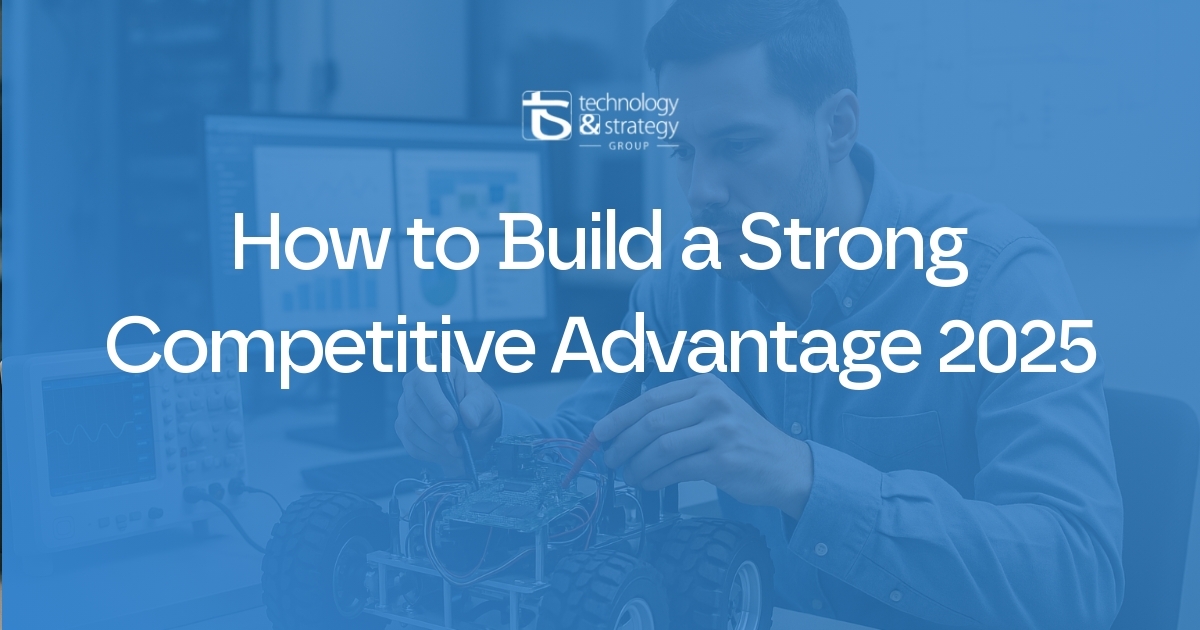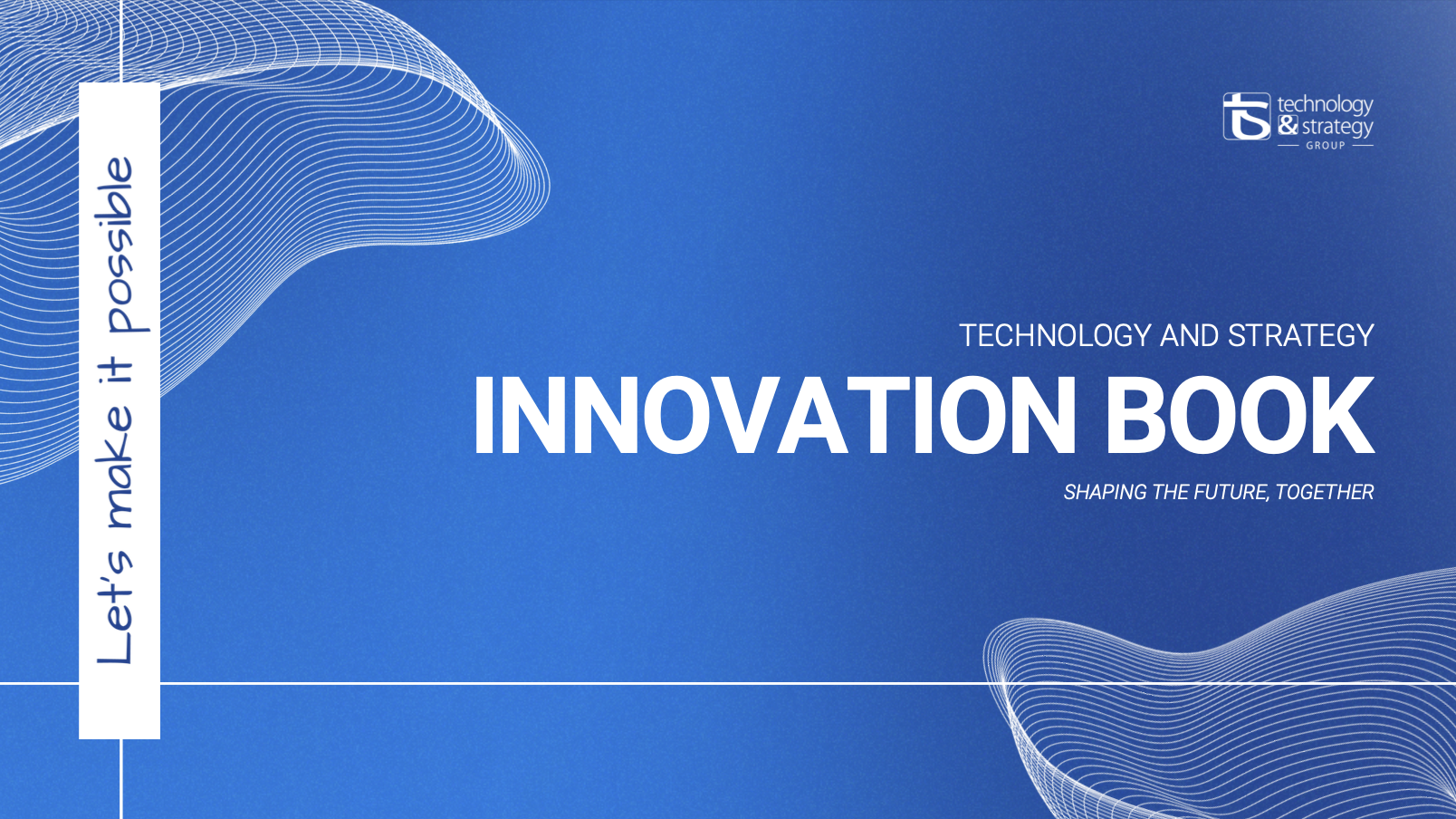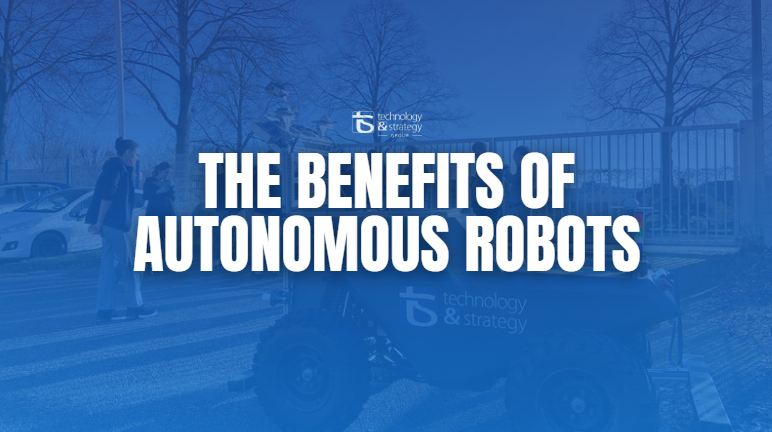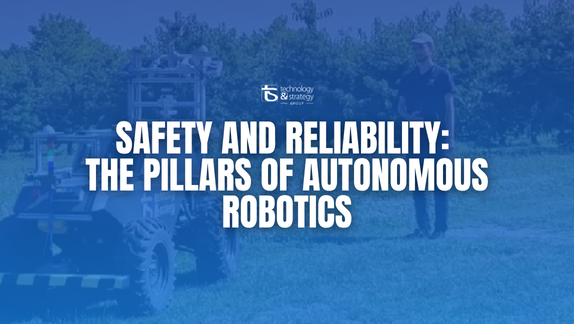Understanding Modern Competitive Advantage Through Technical Leadership
By 2025, companies leveraging engineering-driven strategies will capture 70% more market value than traditional competitors. Most organizations still approach competitive advantage through business strategy alone, missing the profound transformation where technical excellence has become the primary differentiator.
After supporting over 2,500 complex engineering projects annually across critical industries, one pattern emerges clearly: sustainable competitive advantage now requires mastering the convergence of hardware, software, and data at unprecedented levels of sophistication.
Why Engineering Excellence Drives Business Success in 2025
Traditional competitive moats—brand recognition, distribution networks, financial resources—remain valuable but insufficient. Today's market leaders distinguish themselves through technical capabilities that create exponential rather than linear advantages.
Companies achieving engineering excellence generate 3.2x higher revenue growth and maintain 40% longer competitive positioning than those relying solely on business strategy differentiation. The automotive industry exemplifies this transformation perfectly.
- Tesla's competitive advantage stems from over-the-air update capabilities
- Battery management algorithms provide sustained differentiation
- Integrated software architecture creates compound competitive effects
- Traditional OEMs struggle to match software-defined functionality
Engineering excellence creates compound competitive effects. Each technical breakthrough builds upon previous innovations, creating barriers that become exponentially difficult to replicate. Organizations developing real-time embedded systems for aerospace applications can leverage safety-critical design methodologies across automotive ADAS development.
"A design office should not be a simple technical support, but an active player in the strategic development of the company"
- Sebastien Julien, Expert at T&S
The Convergence of Hardware, Software, and Data as Strategic Moat
Modern competitive advantage emerges at the intersection of physical engineering, software capabilities, and data intelligence. Companies mastering this convergence create integrated solutions that competitors cannot easily unbundle or replicate through partnerships alone.
Consider advanced driver assistance systems where radar hardware design, real-time signal processing algorithms, and machine learning models for object classification must operate seamlessly within millisecond timing constraints.
- ISO 26262 functional safety requirements demand integrated expertise
- Multi-disciplinary knowledge spans hardware and software domains
- Vendor relationships face inherent integration challenges
- Dependency risks increase with distributed capability approaches
The data dimension adds another layer of competitive protection. Systems generating operational data while simultaneously optimizing performance create self-improving competitive advantages. Smart grid implementations become more valuable over time, building switching costs and performance gaps.
The 5 Technical Pillars of Sustainable Competitive Advantage
Systems Integration Mastery
Systems integration capability represents perhaps the most defensible competitive advantage in complex technology markets. While individual components become commoditized, the expertise to integrate multiple subsystems into cohesive, high-performance solutions remains scarce and valuable.
Successful systems integration requires understanding interaction effects between hardware, software, and environmental factors that emerge only during operational conditions. Automotive electronic control units must function reliably across temperature ranges from -40°C to 125°C while processing CAN bus messages.
| Integration Domain | Technical Challenges | Competitive Impact |
|---|---|---|
| Hardware-Software Interface | Real-time constraints, power optimization | Performance differentiation, cost advantages |
| Multi-System Communication | Protocol compatibility, latency management | Reliability advantages, faster deployment |
| Environmental Adaptation | Temperature ranges, electromagnetic compatibility | Market access, operational superiority |
| Safety Integration | Redundancy design, failure mode analysis | Regulatory compliance, customer trust |
Organizations developing systems integration expertise benefit from network effects where each successful integration project increases capability to handle more complex future challenges. Teams that have solved real-time performance issues in aerospace applications can apply similar techniques to autonomous vehicle perception systems.
Cross-Sector Innovation Transfer
The most innovative companies systematically transfer technological breakthroughs between industries, creating competitive advantages in multiple sectors simultaneously. Aerospace-developed redundancy concepts enhance automotive functional safety implementations.
Cross-sector innovation requires deep understanding of both source and target industry constraints, regulations, and performance requirements. Successfully adapting military-grade cybersecurity protocols for industrial IoT applications demands expertise in both domains plus creativity to bridge different operational contexts.
- Military cybersecurity protocols adapt to industrial IoT
- Aerospace redundancy concepts enhance automotive safety
- Consumer electronics UI innovations improve industrial interfaces
- Telecommunications optimization applies to smart grid management
Regulatory Compliance as Business Accelerator
Rather than viewing regulatory requirements as constraints, leading organizations leverage compliance expertise as competitive differentiation. Achieving certifications like ISO 26262 for automotive functional safety creates market entry barriers while enabling access to high-value, safety-critical applications.
Compliance expertise provides multiple competitive benefits beyond market access. Organizations understanding regulatory requirements from project inception design solutions that achieve certification efficiently, reducing development costs and time-to-market compared to competitors retrofitting compliance capabilities.
Teams experienced with medical device regulations (ISO 13485) can more easily develop automotive safety-critical systems, while cybersecurity compliance capabilities transfer across multiple industries facing similar threat landscapes.
IP Portfolio and Technical Standards Leadership
Intellectual property strategy combined with technical standards participation creates powerful competitive moats that shape entire industry directions. Organizations contributing to emerging standards development gain implementation advantages while competitors must adapt to specifications they helped create.
Effective IP strategy encompasses trade secrets, technical know-how, and standards essential patents that create ongoing licensing opportunities. Companies developing foundational technologies for 5G automotive communications benefit from royalty streams while maintaining implementation advantages.
- Standards leadership provides competitive intelligence benefits
- Early visibility into industry technology directions
- Preparation for future requirements before competitors
- Valuable industry relationships and partnership opportunities
Data-Driven R&D Excellence
Organizations implementing systematic approaches to R&D optimization achieve competitive advantages through faster innovation cycles, higher success rates, and better resource allocation decisions. Data-driven R&D encompasses predictive analytics for technology assessment and automated testing pipelines.
Machine learning applications in R&D process improvement can identify successful innovation patterns, predict project outcomes, and optimize resource allocation across multiple concurrent development efforts. Companies implementing these approaches reduce development costs by 25-35% while achieving higher technical performance levels.
Simulation and digital twin technologies enable R&D organizations to explore design spaces more comprehensively while reducing physical prototyping costs. Automotive manufacturers using virtual validation for ADAS development can evaluate thousands of driving scenarios computationally.
Building Competitive Advantage in Critical Industries
Automotive: From ADAS to Software-Defined Vehicles
The automotive industry transformation toward software-defined vehicles creates unprecedented opportunities for engineering-driven competitive advantage. Traditional automotive value chains based on mechanical engineering expertise are rapidly evolving toward software and data-centric business models.
Advanced driver assistance systems represent the current competitive battleground where sensor fusion, real-time computing, and machine learning capabilities determine market success. Companies achieving superior object detection accuracy gain competitive advantages that translate directly into market share.
"At the Software Lab, we play a central role at all stages of project lifecycles: architecture, development, tests, validation and documentation. Quality is at the heart of our work, as it is essential to success."
- Cheyma Ksouma, Consultant at T&S Munich
Vehicle-to-everything (V2X) communication technologies exemplify how technical excellence creates competitive moats spanning multiple industry segments. Organizations developing V2X solutions must master wireless communication protocols, cybersecurity implementations, and integration with existing traffic infrastructure.
Case Study: V2X Integration for Market Leadership
A major automotive OEM partnered with T&S to develop comprehensive V2X capabilities spanning vehicle-to-vehicle, vehicle-to-infrastructure, and vehicle-to-pedestrian communication systems. The project required integrating 5G automotive communication standards with existing vehicle architectures.
The technical solution combined dedicated short-range communications (DSRC) with cellular V2X capabilities, enabling vehicles to receive traffic optimization data while participating in cooperative awareness systems. Implementation challenges included managing real-time message processing and ensuring communication security.
- Reduced traffic delays through predictive communication
- Enhanced safety performance via cooperative awareness
- New revenue opportunities through data services
- Predictive maintenance capabilities integration
Aerospace & Defense: Certification as Competitive Barrier
Aerospace and defense markets reward technical excellence through premium pricing and long-term customer relationships, making engineering-driven competitive advantage particularly valuable. DO-178C software certification and DO-254 hardware certification create significant barriers to entry.
Safety-critical system development requires specialized expertise in fault tolerance, redundancy management, and real-time performance optimization under extreme operational conditions. Organizations mastering these capabilities can pursue opportunities across multiple aerospace segments.
Cybersecurity requirements in aerospace applications demand understanding of both traditional information security and operational technology protection in environments where cyber attacks could have catastrophic physical consequences. This specialized expertise creates competitive differentiation extending beyond aerospace.
Energy: Smart Grid Technologies and First-Mover Advantages
Smart grid transformation creates competitive opportunities for organizations combining traditional electrical engineering expertise with modern data analytics and communication technologies. Grid modernization requires integrating renewable energy sources and managing demand response programs.
Predictive analytics applications in energy management can optimize generation scheduling, predict equipment failures, and enable dynamic pricing models that improve grid stability while reducing operational costs. Companies developing these capabilities create competitive advantages through improved service reliability.
Distributed energy resource management represents an emerging competitive frontier where technical excellence in power electronics, communication protocols, and optimization algorithms enables new business models around microgrids and energy storage.
The Technology Stack Framework for Competitive Positioning
Embedded Systems and Real-Time Computing
Real-time computing capabilities form the foundation for competitive advantage in industries requiring deterministic system responses. Automotive ADAS applications, aerospace flight control systems, and industrial automation equipment all demand processing architectures guaranteeing response times measured in microseconds.
Organizations mastering real-time systems development understand the subtle interactions between hardware architecture, operating system selection, and application software design that determine overall system performance. This expertise cannot be easily acquired through vendor relationships.
Power optimization in embedded systems creates additional competitive differentiation, particularly for battery-operated devices or energy-efficient applications. Techniques spanning hardware selection, software optimization, and dynamic power management enable longer operational life while maintaining performance requirements.
AI and Machine Learning Integration
Artificial intelligence implementation in embedded systems requires specialized expertise combining machine learning algorithms with real-time computing constraints and resource limitations. Successful AI integration demands understanding of model optimization and hardware acceleration.
Computer vision applications illustrate the complexity of embedded AI implementation. Object detection algorithms must achieve high accuracy while operating within power budgets measured in watts rather than kilowatts available to data center implementations.
- Neural network quantization for resource optimization
- Specialized processor architectures for AI workloads
- Algorithm-hardware co-design methodologies
- Edge computing architectures for intelligent behavior
Edge AI capabilities create competitive advantages through reduced latency, improved privacy, and operational independence from network connectivity. Organizations mastering embedded AI implementation can offer solutions that remain functional during communication outages.
IoT and Edge Computing Architectures
Internet of Things deployments require understanding of communication protocols, data management strategies, and security implementations across distributed device networks. Successful IoT architecture design balances connectivity costs, power consumption, and operational reliability constraints.
Industrial IoT applications demand particularly robust implementations that function reliably in harsh environmental conditions while integrating with existing manufacturing systems. Organizations experienced with industrial protocols and safety requirements gain competitive advantages through faster deployment.
Edge computing optimization enables IoT implementations that process data locally while selectively synchronizing with cloud services, reducing bandwidth costs and improving response times. This architectural expertise becomes increasingly valuable as IoT deployments scale beyond proof-of-concept implementations.
Cybersecurity as Business Enabler
Cybersecurity implementation in operational technology environments requires specialized expertise distinct from traditional information technology security practices. Industrial control systems, automotive networks, and aerospace applications present unique attack surfaces.
Security-by-design approaches create competitive advantages through reduced vulnerability exposure and faster compliance achievement. Organizations implementing security considerations from initial architecture definition avoid costly retrofitting while achieving superior protection levels.
Cryptographic implementation in resource-constrained environments demands expertise in algorithm selection, key management, and performance optimization under strict power budgets. These specialized capabilities enable secure solutions in applications where generic security approaches prove inadequate.
From Strategy to Implementation: The One-Stop-Shop Approach
Rapid Prototyping and Proof of Concept
Rapid prototyping capabilities enable competitive advantage through faster concept validation and reduced development risks. Organizations combining simulation tools, automated testing frameworks, and agile development methodologies can evaluate more design alternatives faster than competitors.
Digital twin technologies accelerate prototyping by enabling virtual validation of complex interactions before physical implementation. Automotive manufacturers can simulate crash scenarios, evaluate aerodynamic performance, and optimize powertrain efficiency computationally, reducing physical testing requirements.
- Virtual validation reduces development costs significantly
- Broader design space exploration capabilities
- Faster iteration cycles through computational modeling
- Risk reduction before physical implementation phases
Agile Development with Industrial Constraints
Agile development methodologies adapted for industrial applications must accommodate regulatory requirements, safety standards, and validation processes that traditional software development approaches do not address. Organizations successfully implementing industrial agile practices achieve faster development cycles while maintaining compliance.
Continuous integration in industrial development requires specialized toolchains that support hardware-in-the-loop testing, regulatory documentation generation, and multi-target deployment across different processor architectures. These capabilities enable faster iteration while maintaining industrial-grade quality standards.
Requirements traceability in agile industrial development demands tools and processes that maintain regulatory compliance while supporting iterative development approaches. Organizations mastering this balance achieve competitive advantages through faster time-to-market without sacrificing compliance requirements.
Continuous Integration in Safety-Critical Environments
Safety-critical development environments require continuous integration approaches that maintain traceability, support formal verification processes, and enable automated testing across multiple safety scenarios. These specialized CI/CD implementations create competitive advantages through faster development cycles.
Automated testing in safety-critical applications encompasses fault injection, stress testing, and failure mode analysis beyond functional verification. Organizations implementing comprehensive automated testing achieve higher reliability while reducing validation costs compared to manual testing approaches.
Version control and configuration management in safety-critical environments must support regulatory audit requirements while enabling collaborative development across distributed teams. Specialized toolchains that balance regulatory compliance with development efficiency create competitive advantages.
Measuring and Maintaining Technical Competitive Advantage
KPIs for Engineering Excellence
Engineering excellence measurement requires metrics spanning technical performance, innovation velocity, and business impact to provide comprehensive visibility into competitive positioning. Traditional project metrics must be supplemented with indicators measuring technical debt and innovation pipeline health.
Innovation metrics should encompass both breakthrough developments and incremental improvements that compound over time to create significant competitive advantages. Patent filings, technical publication quality, and standards contributions provide leading indicators of future competitive positioning.
| KPI Category | Key Metrics | Competitive Impact |
|---|---|---|
| Innovation Velocity | Patent filings, R&D cycle time, breakthrough frequency | Future market positioning, technology leadership |
| Technical Performance | System reliability, performance benchmarks, efficiency gains | Direct competitive differentiation, customer satisfaction |
| Development Efficiency | Time-to-market, development cost ratios, quality metrics | Resource optimization, market responsiveness |
| Knowledge Transfer | Cross-project synergies, capability reuse, skill development | Competitive advantage multiplication, cost efficiency |
Time-to-market measurements must account for technical complexity and regulatory requirements to provide meaningful competitive benchmarks. Organizations achieving faster development cycles while maintaining technical excellence gain sustainable competitive advantages through more frequent innovation.
Innovation Metrics and R&D ROI
R&D return on investment calculation in engineering-driven organizations requires understanding both direct revenue impacts and competitive positioning benefits that may not generate immediate financial returns but create long-term strategic advantages.
Cross-project knowledge transfer measurement identifies opportunities to leverage technical developments across multiple applications, multiplying R&D investment returns while creating competitive advantages in multiple markets simultaneously. Organizations maximizing cross-project synergies achieve superior R&D efficiency.
Technical risk management metrics help balance innovation ambition with execution reliability, enabling organizations to pursue competitive differentiation through technical leadership while maintaining delivery commitments to customers and stakeholders.
Technical Debt Management as Strategic Tool
Technical debt management becomes a competitive advantage when approached strategically rather than reactively. Organizations that systematically identify, prioritize, and address technical debt maintain development velocity while competitors with accumulated debt face increasing costs.
Strategic technical debt involves conscious decisions to accept short-term implementation compromises in exchange for faster market entry, followed by planned resolution phases that prevent debt accumulation from constraining future capabilities.
Legacy system modernization represents a particularly valuable form of technical debt resolution that can create competitive advantages through improved performance, reduced operational costs, and enhanced capability to integrate new technologies.
Future-Proofing Your Competitive Position: 2025-2030 Roadmap
Quantum Computing Readiness
Quantum computing preparation requires understanding both the opportunities and threats that quantum technologies will create across different industry sectors. Organizations beginning quantum readiness initiatives today will gain competitive advantages as quantum computing capabilities mature.
Cryptographic migration strategies become critical as quantum computers threaten current encryption methods while offering new capabilities for optimization and simulation applications. Organizations preparing for post-quantum cryptography implementation will maintain security advantages.
- Supply chain optimization through quantum algorithms
- Financial portfolio management quantum applications
- Materials science computational advantages
- Post-quantum cryptography migration strategies
Sustainability Regulations as Opportunity
Environmental regulations increasingly create competitive opportunities for organizations with technical capabilities to achieve superior sustainability performance while maintaining operational efficiency. Carbon footprint reduction and circular economy principles become competitive differentiators.
Life cycle assessment capabilities enable product designs that achieve superior environmental performance while optimizing costs and functionality. Organizations mastering sustainable design methodologies gain competitive advantages through regulatory compliance and customer preference.
Green technology development creates new markets while potentially disrupting existing business models. Companies combining technical excellence with sustainability focus can capture emerging opportunities while building competitive moats around environmental performance capabilities.
Cross-Industry Technology Convergence
Technology convergence between previously distinct industries creates competitive opportunities for organizations with expertise spanning multiple sectors. Automotive software capabilities become relevant for aerospace applications, while telecommunications technologies enable smart grid implementations.
Platform architectures that support multiple industry applications create economies of scale and competitive advantages through shared development costs. Organizations building cross-industry platforms can achieve competitive positioning in multiple markets simultaneously while reducing development costs.
Ecosystem partnership strategies become increasingly important as technology convergence creates opportunities for collaborative innovation while requiring coordination across different industry standards. Organizations skilled at managing cross-industry partnerships can access broader markets while leveraging complementary expertise.
Building Your Competitive Advantage Action Plan
Technical Audit Checklist
Competitive advantage assessment begins with comprehensive evaluation of current technical capabilities relative to industry benchmarks and emerging technology trends. Organizations should evaluate capabilities across systems integration, cross-sector expertise, and regulatory compliance.
Gap analysis identification helps prioritize capability development investments to achieve maximum competitive impact while addressing critical vulnerabilities that could enable competitor advantages. Technical roadmap development should balance short-term competitive needs with long-term strategic positioning.
- Systems integration capability assessment
- Cross-sector expertise evaluation
- Regulatory compliance positioning
- Intellectual property asset analysis
- Data-driven development process maturity
Partnership and Ecosystem Strategy
Strategic partnership selection should prioritize relationships that enhance competitive differentiation rather than merely filling capability gaps. The most valuable partnerships create mutual competitive advantages through complementary expertise and shared innovation risks.
Technology partner evaluation requires understanding both current capabilities and development roadmaps to ensure partnership value grows over time. Due diligence should encompass technical capabilities, financial stability, cultural compatibility, and strategic alignment.
Ecosystem participation strategies help organizations stay connected to innovation trends while building relationships that support competitive advantage development. Academic partnerships and industry consortium participation provide access to emerging technologies while building competitive intelligence capabilities.
Next Steps and Implementation Timeline
Implementation planning should sequence capability development to create early competitive advantages while building toward more significant long-term differentiation. Quick wins in technical excellence can provide immediate competitive benefits while longer-term capability development efforts mature.
Resource allocation decisions require balancing investment across capability building, innovation projects, and operational excellence to maintain competitive positioning while developing future advantages. Organizations should resist focusing exclusively on either short-term or long-term competitive needs.
Success measurement frameworks should encompass both competitive positioning metrics and business impact indicators to ensure technical excellence investments translate into sustainable competitive advantages. Regular review and adjustment of competitive advantage strategies ensures continued relevance as market conditions evolve.
The engineering excellence framework provides a systematic approach to building sustainable competitive advantage through technical leadership rather than relying solely on business strategy differentiation. Organizations implementing this framework position themselves to capture increasing market value while creating barriers that protect their competitive positioning over time.


















